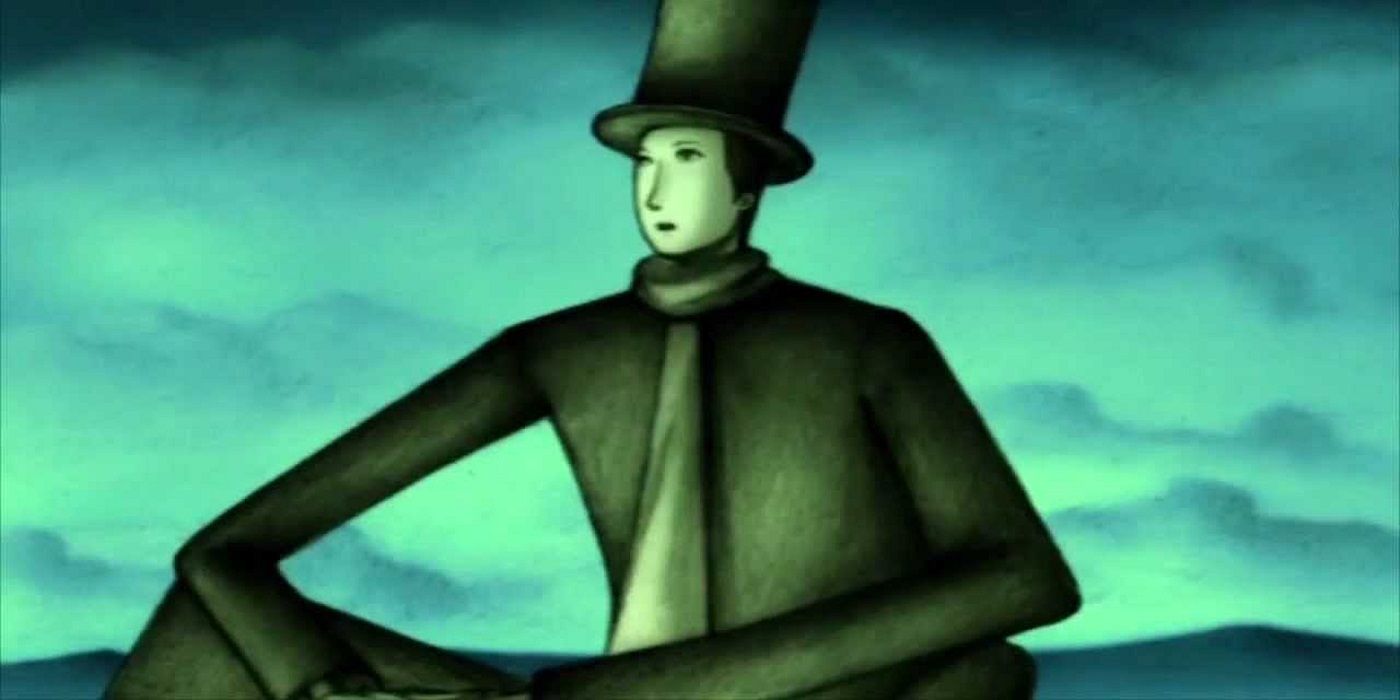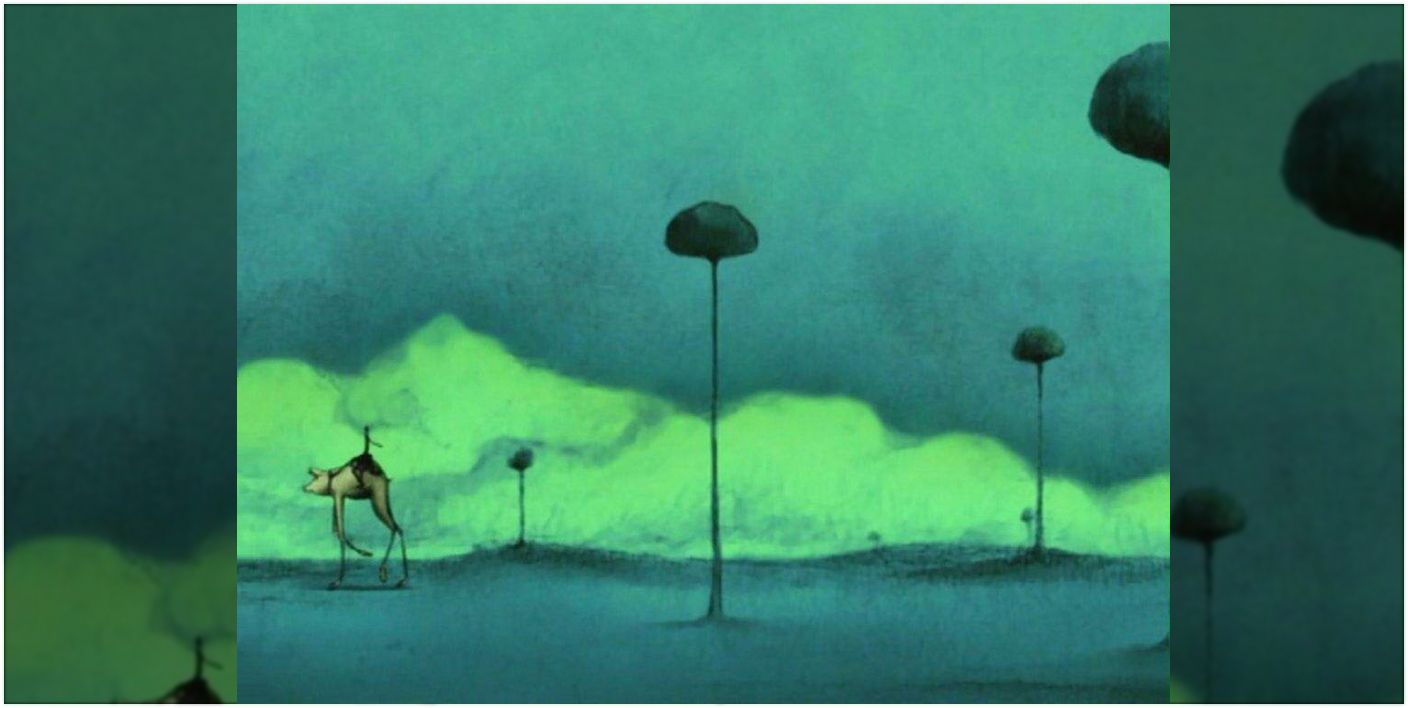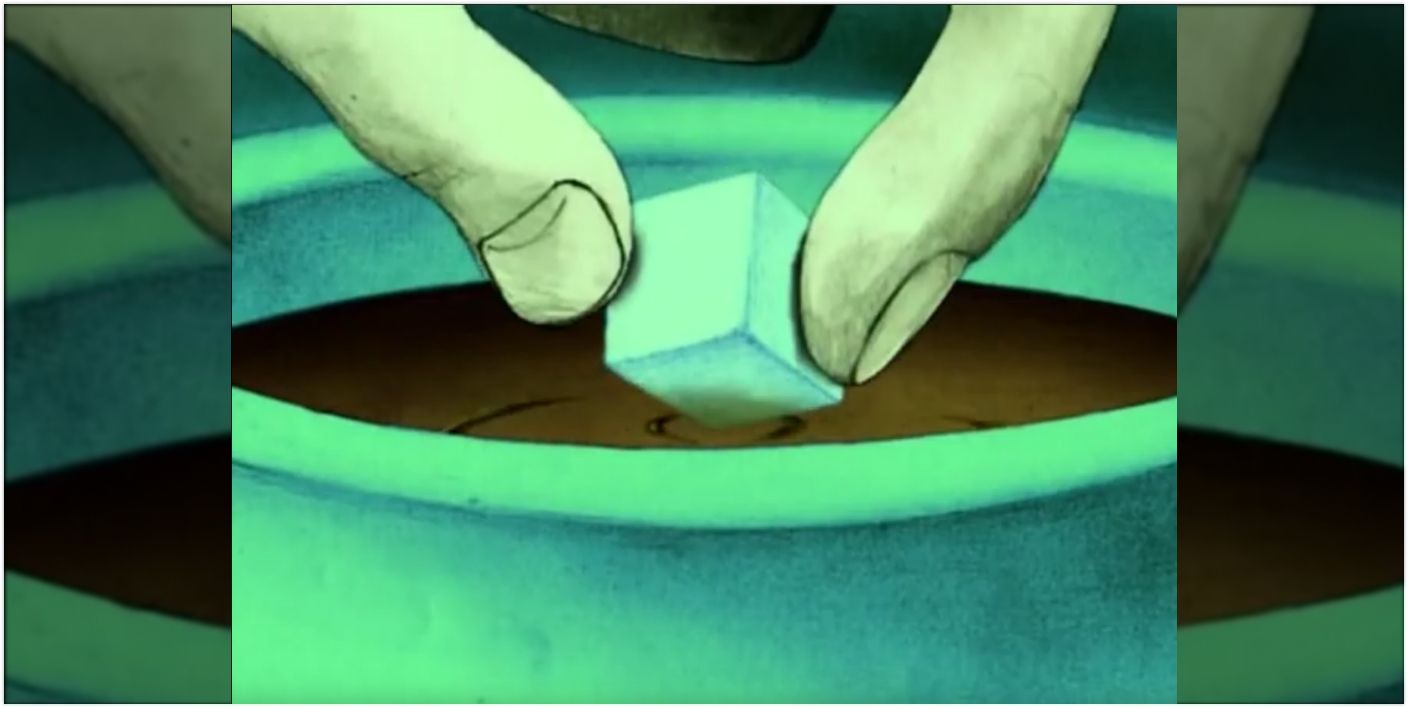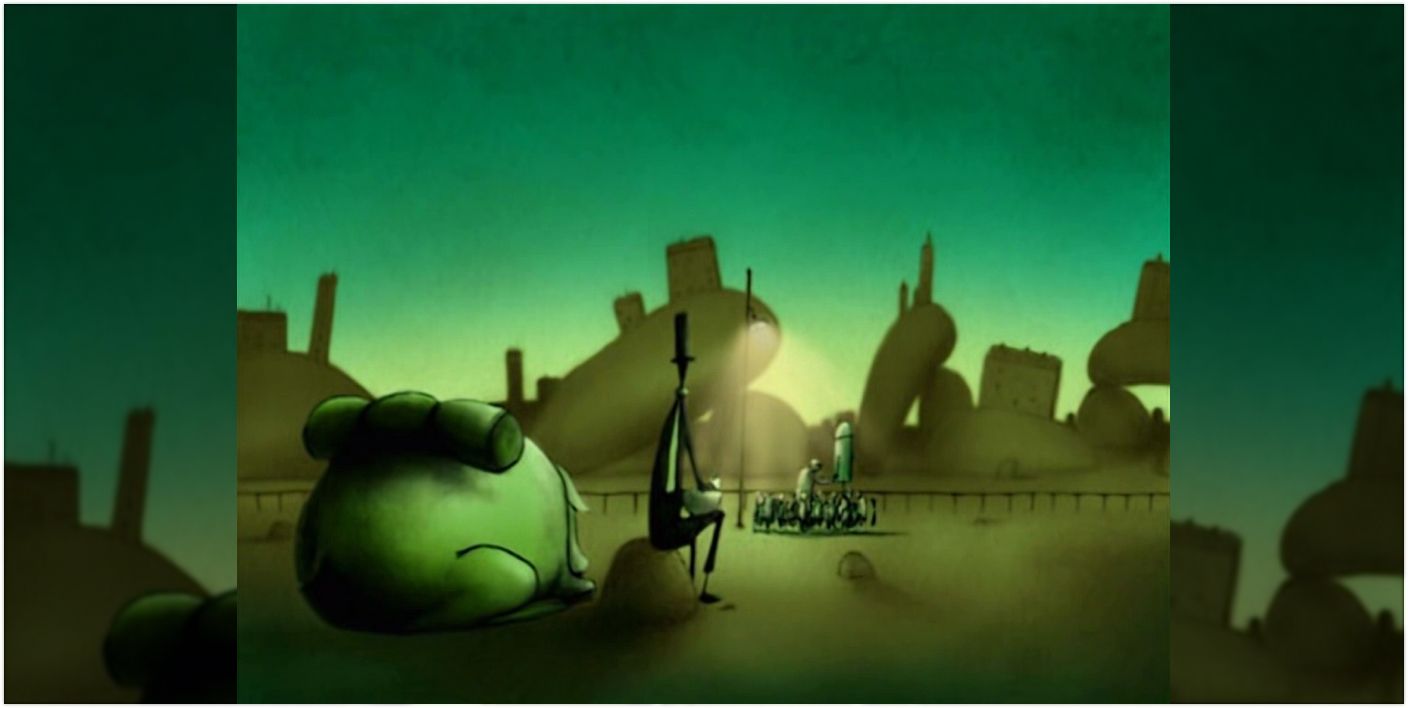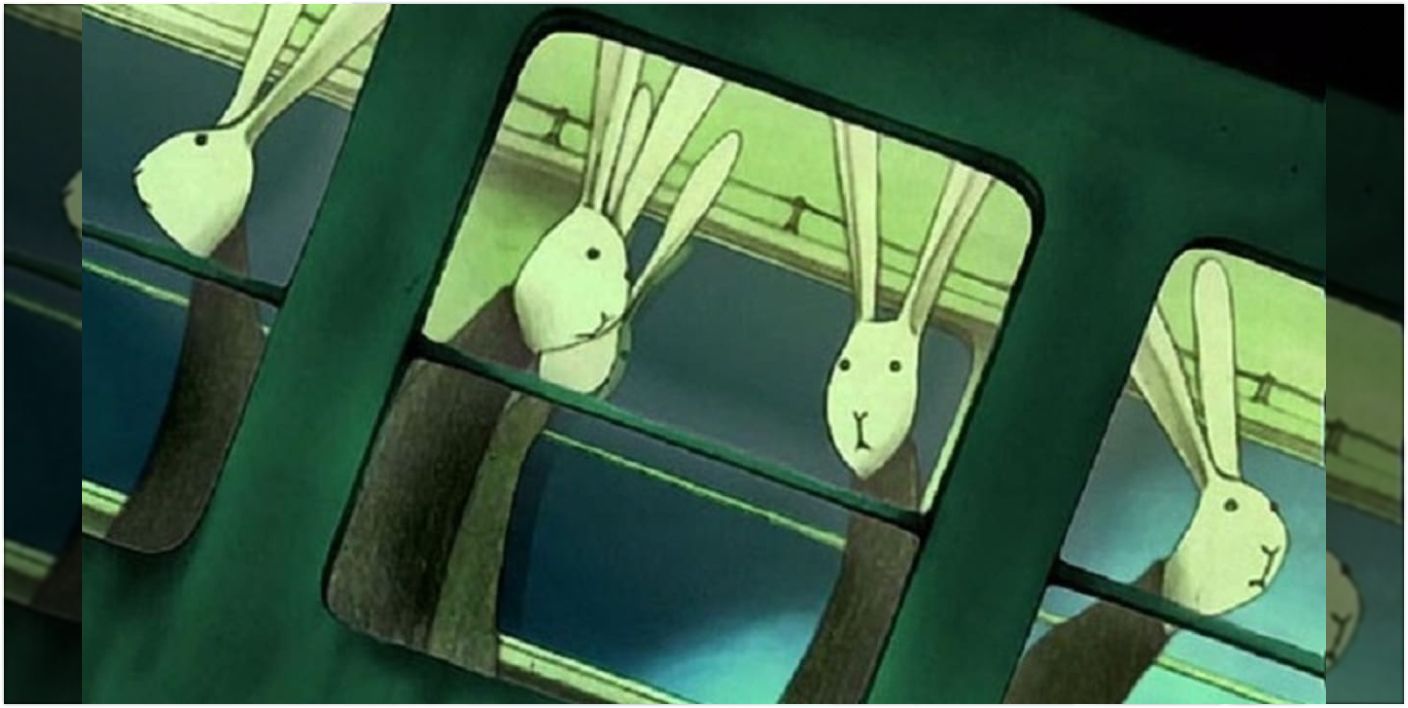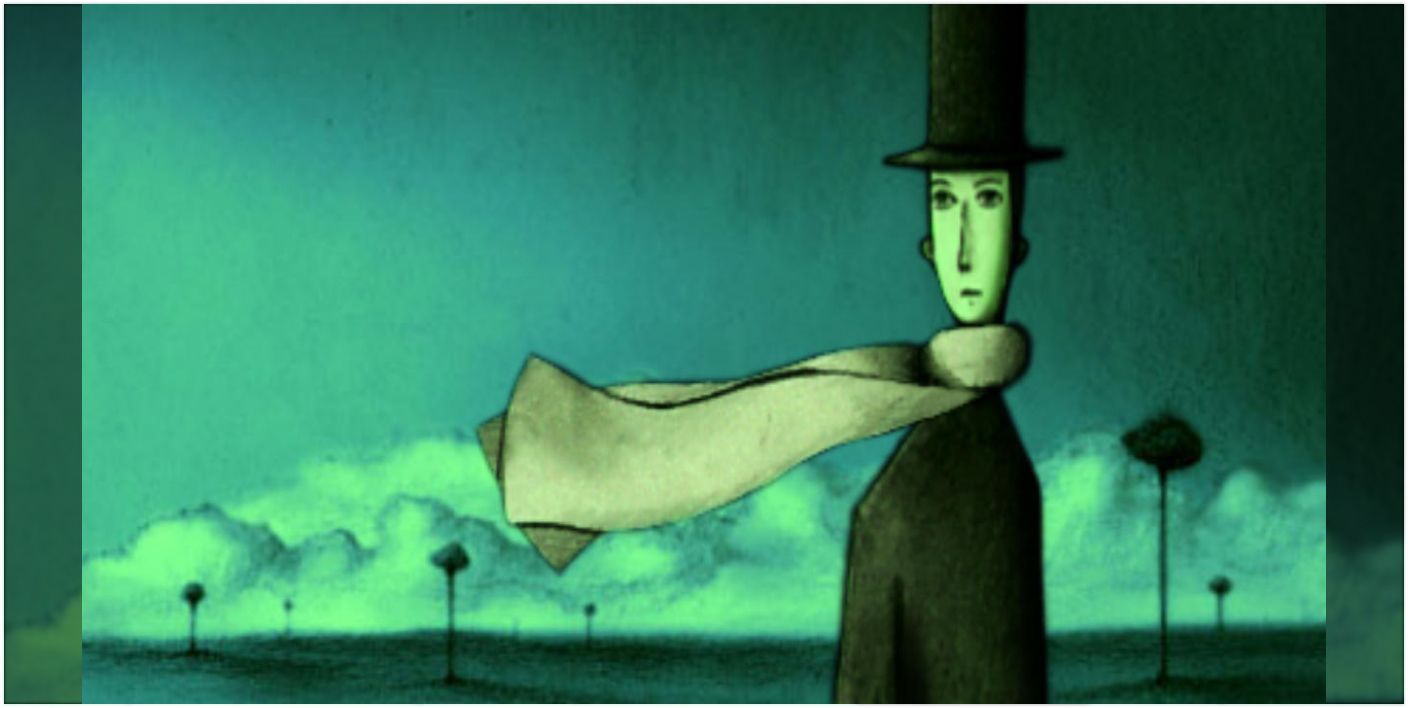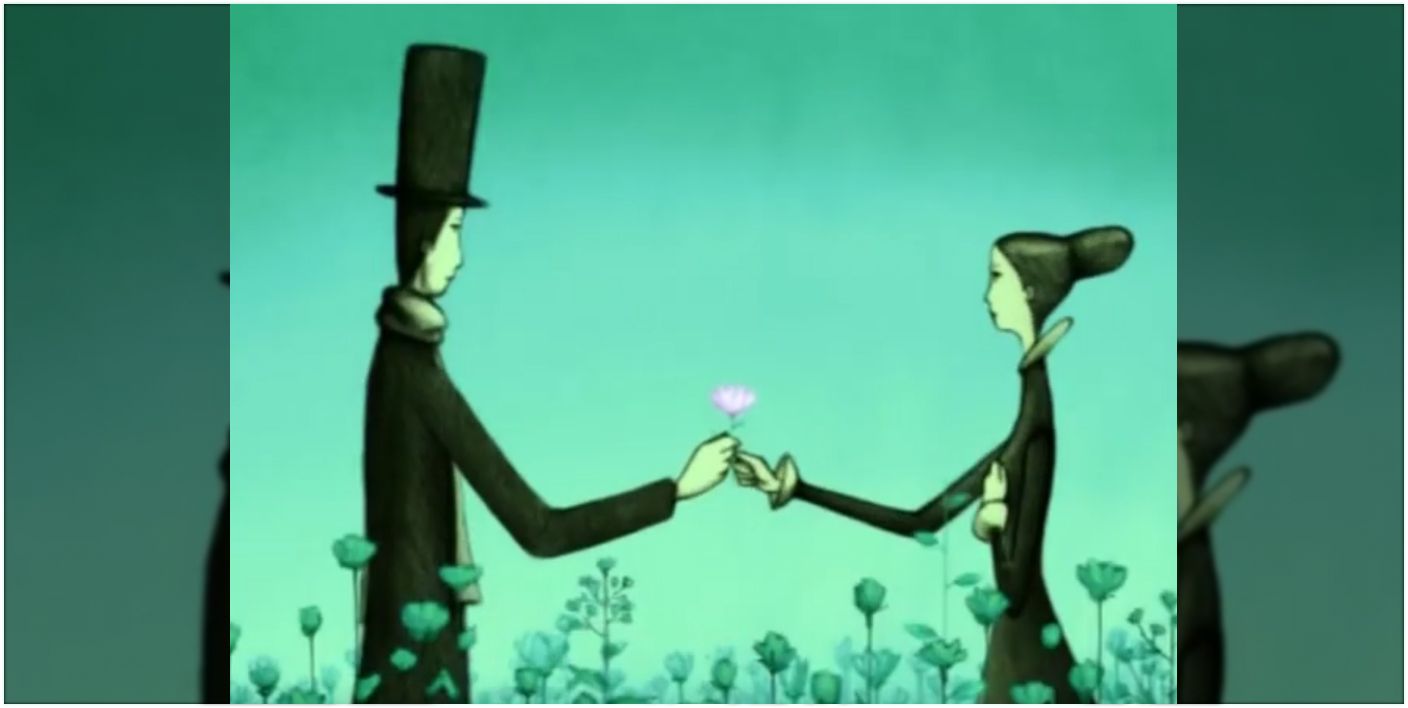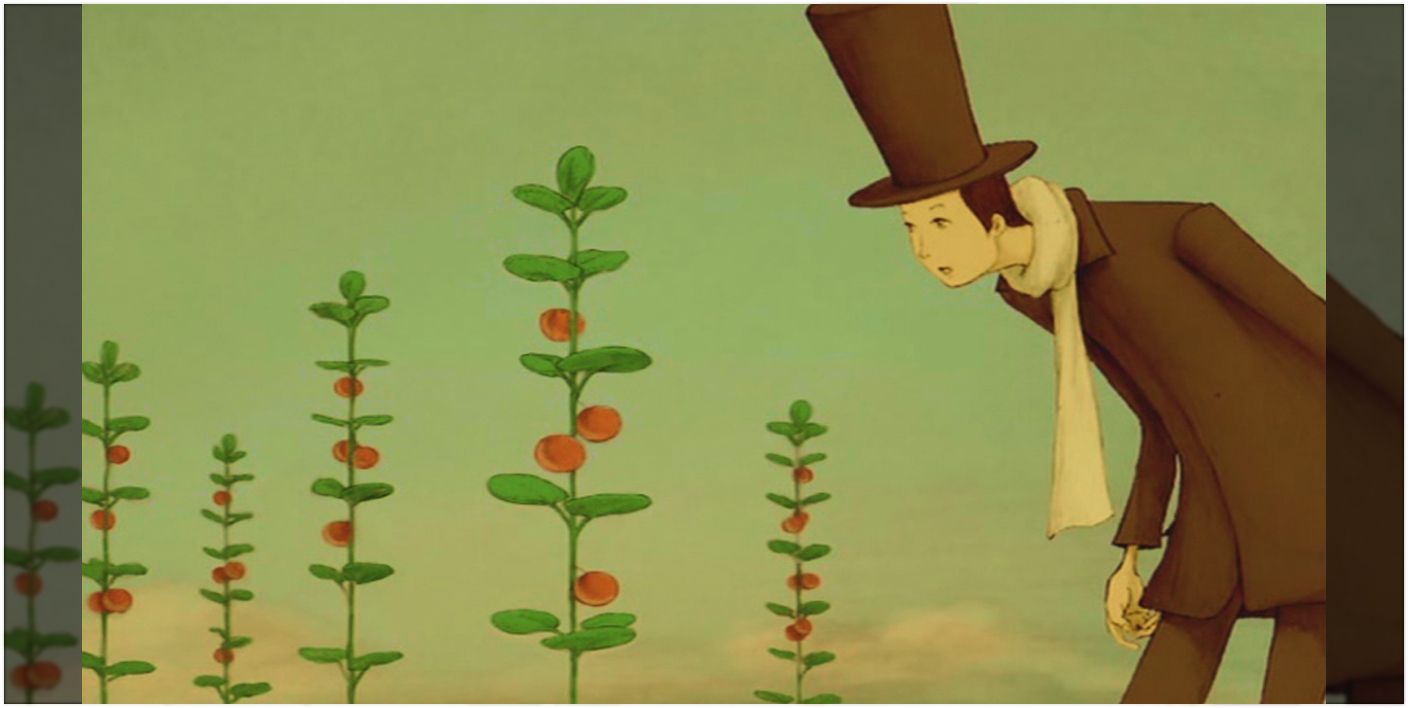A Traveller’s Diary is a short miniseries composed of seven three-minute episodes produced by Kunio Kato that was released in 2003. The story follows the nomadic journey of Tortov Roddle, who hails from Toralia, and the people he meets along the way. As he rides on his long-legged pig, Tortov experiences a variety of strange and surreal landscapes, all the while observing the quirky customs of its inhabitants. For a character that never utters a word, Tortov remains a compelling figure as he discovers the wonders of life around him.
The series is largely silent outside of its score and sound effects, which allows viewers to focus on its storytelling elements and beautiful animation. A Traveller’s Diary offers a whimsical yet introspective tale that manages to be simultaneously dark and optimistic in its outlook. Here’s a look into this surreal masterpiece and why anime fans should take 20 minutes out of their day to watch it.
Episode 1: A City of Light
While A Traveller’s Diary might be playful in many of its stories' themes, the animation's coloration is rather drab to say the least. Laced with pastel blues, ocean-like greens and an array of darkened shadows, Tortov remains an isolated character who somehow maintains an element of control over an environment that looks like it could swallow him up at a moment's notice.
In the series’ debut, Tortov spots a solitary town and attempts to make his way over to receive shelter. However, before he can even make it to the top of the hill, the entire vicinity begins to rumble, rise and is carried away on the back of a giant frog. From the outset of the ONA, Kato makes a bold statement: the viewer should expect the unexpected.
Episode 2: Midnight Café
Those watching the series will immediately notice that the animation style is wildly different from the large bulk of modern Japanese works. Kato seems to have taken inspiration from early theatrical French cinema, such as Georges Méliès’ A Trip to the Moon, which can be seen through A Traveller’s Diary’s use of inter-titles, Westernized clothing and form of surrealism.
The Episode "Midnight Café" is no exception, in which the setting seems to have been taken straight out of a Degas painting or Hemingway novel. While Tortov remains alone in the gloomy interior, his face is lightened by the dim glow of a lamp and steam rising from his coffee. In this moment, magic occurs, as a fish plops and then flops in and out of his cup. While little else happens in this short, its atmosphere and pleasing aesthetic is more than enough to keep people engaged.
Episode 3: The Little Town’s Movie Gathering
If A Traveller’s Diary wasn’t already clear in its ode to classic cinema and animation moments, this episode highlights how moving pictures can be just as enchanting as any of the otherworldly creatures contained within its world. During a stop at the Twilight village, Tortov witnesses a screening of a children's cartoon that's being beamed onto the back of a bear. In comedic fashion, the series somewhat breaks the fourth wall by having the animal mirror the cartoonish behavior of the on-screen fox.
The Little Town’s Movie Gathering offers one of the few moments where human life feels plentiful. The laughs of the children, irritated grunts of workers and growls of the bear create an excitable and lively atmosphere that isn’t felt in many of the other episodes. Just as Tortov is offered a welcome break in this moment, so too are viewers of the series before they must also venture back out into the wilderness.
Episode 4: Moonlight Travelers
While camping on the northern plains, Tortov spots eight rabbits, who have no arms, marching across each sand dune with great purpose. In an effort to find out what they are doing, he follows them until they reach a buried tram, which unexpectedly lights up and begins to rise into the air. Like some sort of extraterrestrial vehicle, it eerily hovers and twirls before gliding off toward the moon.
The hollow sound of the wind mixed with the energetic vibration of the vehicle is reminiscent of the mechanical sound effects contained in David Lynch’s Eraserhead, while the eerie stares of the creatures Tortov witnesses are distinctly similar to the characters contained within the aforementioned director's film Rabbits. There is something uniquely disturbing yet heartwarming about this episode that defies explanation.
Episode 5: The Melancholy Rain
Contained within a rainy city whose architecture evokes Wyndham Lewis’ classic painting Surrender of Barcelona, Tortov experiences a nightmare. His pig grows to a gargantuan size and screams eerily into the night. Suddenly, he wakes up, and a bubble protrudes from his hat, which he quickly places into the fire to evaporate. It appears that many other residents have experienced a similar problem, as the chimneys on each building pump out smoke like Victorian England.
As Tortov’s nightmare subsides, the rain patters down on the cool blue city. The calming music, composed by Kenji Kondo, gently sweeps over the landscape and allows viewers to appreciate some of the city's beautifully designed elements. Tetsuya Saito’s elegant piano melody within this segment offers a pleasant relief to the nightmarish vision that Tortov has, deflating the situation as much as his hat’s bubble does in the fire.
Episode 6: The Flower and the Lady
The true nature behind "The Flower and the Lady" is ambiguous. However, it appears to tell the tale of Tortov’s lover. The opening scene seems to be a memory that has been evoked from a dried flower contained within the Traveller’s diary. Tortov reminiscences how he met this woman and the time they spent together, when she gave him the flower that he now holds so dear.
This marks an important moment in the story. Outside of Tortov’s three-legged pig, he appears to have few relationships since he is constantly on the move. The introduction of this female character brings into question several key ideas -- including whether his journey has sprung from the breakdown of this relationship or if this is simply a moment of homesickness in which he is thinking of those he left behind.
Episode 7: The Red Berry
After eating an apple-like fruit, Tortov goes on a psychedelic journey with a fellow traveler. From making him stumble and laugh uncontrollably to seeing his trusty pig’s face warp into fantastical proportions, it appears that Tortov is in for an eclectic trip. Through mushroom-scattered fields, Tortov and his bunny-suited friend enjoy the sights of the surrounding landscapes.
As they journey through the fields, they spot a mysterious pixie that guides them over various grass-covered hills. However, before they can get ahold of this creature, the weather begins to change. A strong wind blows through the valley, lifting Tortov and his companion up into the air, while a peculiarly large ram repeatedly baas. Suddenly, Tortov awakens from his psychotropic experience and finds himself lying next to a rabbit, who is fast asleep.
A Traveller’s Diary manages to be a mature and artistic saga while simultaneously possessing many qualities that are child-like in nature. Tortov Roddle’s journey is a peaceful look at a magical world that contains enough surprises along the way to keep people engaged. Both the animation and score are perfectly combined to make each city, open plain or dainty café an enchanting experience. Tortov’s tale will likely have viewers pondering about their own lives and the mysteries contained within the world around them.

